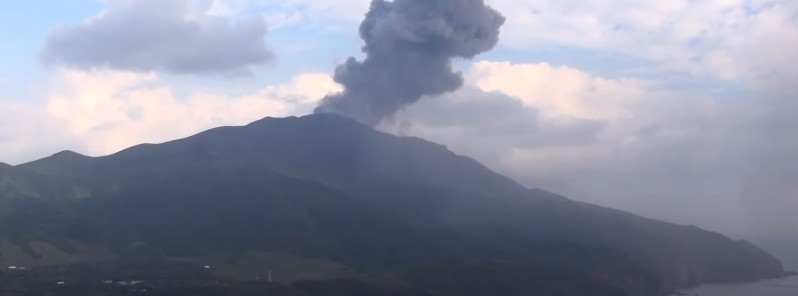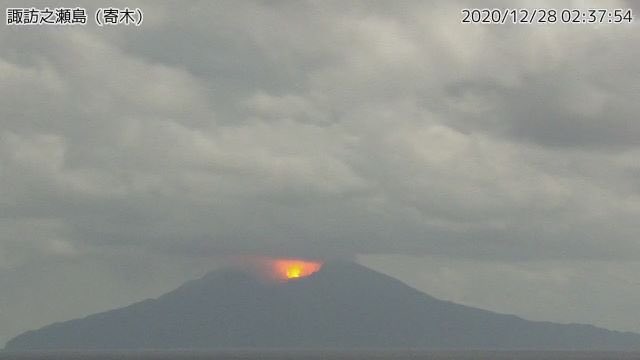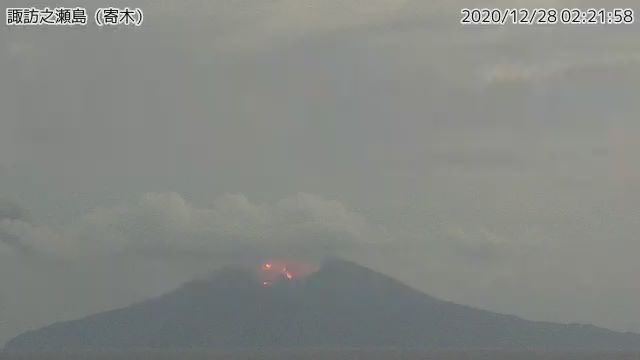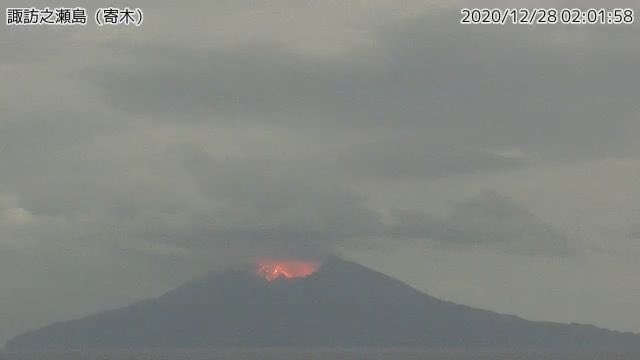Strong eruption at Suwanosejima volcano, Alert Level raised, Japan

A strong explosive eruption took place at Suwanosejima's Mt. Otake crater at 17:51 UTC on December 27, 2020 (02:51 JST, December 28). As a result, the Japan Meteorological Agency (JMA) raised the Alert Level from 2 to 3 — Near-crater warning, do not approach the volcano — at 17:56 UTC.
There were no immediate reports of injuries.
JMA said large rocks were thrown some 1.3 km (0.8 miles) from the crater and warned they could affect an area of about 2 km (1.2 miles) from the crater at any time.
A dense dark ash plume rose to approximately 1.8 km (6 000 feet) a.s.l., drifting SE.

Activity at the volcano continues at moderately high levels, accompanied by a strong glow from the crater.
The Japanese government has set up a liaison office at the prime minister's office to gather more information, Kyodo reported.


Image credit: JMA


Image credit: JMA


Image credit: JMA
Geological summary
The 8 km (5 miles) long, spindle-shaped island of Suwanosejima in the northern Ryukyu Islands consists of an andesitic stratovolcano with two historically active summit craters. The summit is truncated by a large breached crater extending to the sea on the east flank that was formed by edifice collapse.
Suwanosejima, one of Japan's most frequently active volcanoes, was in a state of intermittent strombolian activity from Otake, the NE summit crater, that began in 1949 and lasted until 1996, after which periods of inactivity lengthened.
The largest historical eruption took place in 1813-14 when thick scoria deposits blanketed residential areas, and the SW crater produced two lava flows that reached the western coast.
At the end of the eruption, the summit of Otake collapsed forming a large debris avalanche and creating the horseshoe-shaped Sakuchi caldera, which extends to the eastern coast.
The island remained uninhabited for about 70 years after the 1813-14 eruption. Lava flows reached the eastern coast of the island in 1884. Only about 50 people live on the island.
Featured image credit: JMA

It is clear that the activity around the ring of fire has increased
Follow dutchsinse on Youtube to learn more about prediction for volcanoes and earthquakes.